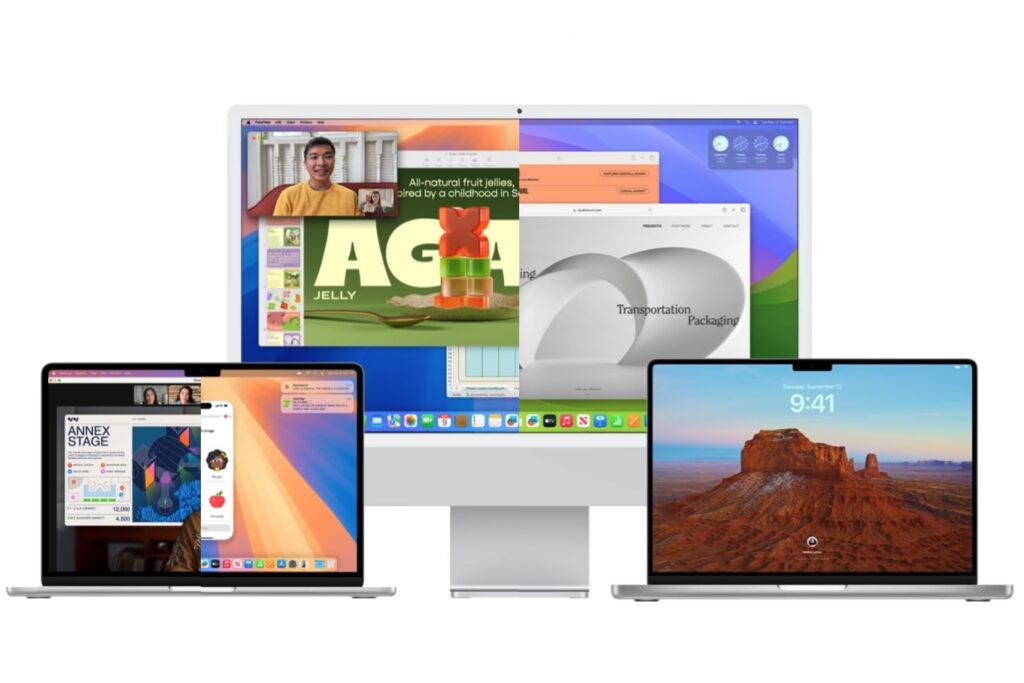How to downgrade macOS update: Rollback Sequoia to Sonoma

macOS Sequoia arrived on Macs in September 2024. Many people have installed Sequoia and love it, while others have installed the updated only to regret it later. Perhaps you’ve discovered that an app you rely on no longer works or is buggy? Maybe you hate one of the new features? Or you are frustrated that your Mac can’t take advantage of all the new features. The good news is that it is possible to revert to a previous macOS version.
Another issue is that sometimes when Apple updates the Mac operating system with new features, users encounter problems with the latest version and need to revert back to the previous macOS. Our advice is usually to wait a few days or weeks before installing a major update for this reason (although sometimes it’s recommended you install it straightaway if the update is necessary for security reasons.)
Luckily it is possible to revert to the previous version of macOS from before the update, but, unfortunately, it isn’t as simple as finding the older version of the Mac operating system and reinstalling it–and it can mean you lose some of your data.
Maybe you need to run an older version of the macOS on a Mac you are using to test apps as part of your job. We have a separate article that looks at various ways to downgrade to older versions of macOS. You may also want to look at other ways to install the older version of macOS, such as installing it on a separate volume (also known as dual booting) or running it on a separate drive.
Below, we’ll run through the steps to downgrade your Mac from the latest version of macOS Sequoia to an older one, or from Sequoia to Sonoma. If you want to downgrade from a beta version of macOS we have a separate article dealing with downgrading from a beta version of macOS.
If it’s iOS you want to roll back it’s not so simple because Apple stops older versions of iOS being available. Read about how to downgrade from iOS 18 to iOS 17.
Foundry
How to revert a macOS update
It’s not always a completely new version of macOS you want to revert from. Apple issues multiple point updates throughout the year and if something breaks on your Mac following that update you may want to go back to the previous version. This could be from Sequoia 15.1 to 15.0, or it could be from macOS Sonoma 14.7 to 14.6. At the time of writing Sequoia hasn’t been updated beyond 15.0, but when it is it will be possible to drop back to the previous version of Sequoia.
So, if there is something in an update to Sequoia that is causing problems for you, you can revert to an older version of macOS, but you will need to wipe your Mac to do so. The method will be determined by whether of not you already have a backup (and how old that backup is).
With a backup from before your update: If you have a backup, all you need to do is wipe your Mac and then recover your backup with the older version of the backup from before your update to the new macOS.
Without a backup: If you don’t already have a backup, you will need to backup the data on your Mac because the process involves wiping your Mac and then doing a clean install of the macOS you want. For your backup you should use a backup tool other than Time Machine*.
You’ll find more details on how to use both of these methods to revert to an older version of macOS below.
*Why you shouldn’t use Time Machine for this backup: Apple’s Time Machine is no good here because when it backs up your Mac it will back up the current version of macOS as well, and when you recover your Mac from the backup you’ll recover that version too. You could use a tool like Carbon Copy Cloner (which has a free 30-day trial or costs £52/$49.99), and doesn’t make you back up the operating system. Check out our recommendations here: Best backup software for Macs. We also have advice about How to back up a Mac.
How to downgrade from Sequoia to Sonoma
Chances are you arrived on this article because you have updated to Sequoia and regret it. The process is just the same as if you are reverting from a minor update to macOS.
With a backup from before your update: If you have a Time Machine backup from before the update, you can revert to that, but you will lose any new data, so make sure you back up (but not with Time Machine, as explained above).
Without a backup: If you don’t have a backup you will need to make one and then recover your data to your Mac after wiping your Mac and doing a clean install of macOS Sonoma.
We’ll look at the various options and how you can downgrade from macOS Sequoia to Sonoma below.
Foundry
Option 1: Downgrade macOS using a Time Machine backup
If you have an older Time Machine backup from before you upgraded the downgrade process is a lot easier. With your pre-Sequoia Time Machine backup in hand, you can recover your machine from before the update and then copy back any files you created after you installed Sequoia.
This is our preferred method because Time Machine backs up your settings and apps so that when you recover from that backup everything is exactly the way you are used to it being, which can be comforting. As long as you have old backups you should be able to go back to a date before your upgrade and recover that version of your Mac. Just remember that anything you have done since then will be lost because you’ll wipe everything on your Mac as part of the process, so you will need to make a non-Time Machine backup of those files.
Here’s how to recover the old version of macOS using Time Machine:
Plug your Time Machine disk into your Mac.
Restart your Mac.
If you have an Intel Mac hold down Command + R until the Apple logo appears. If you have an M1 or later Mac you need to press and hold the power button until the Options menu comes up.
When the options appear on the screen, choose ‘Restore From Time Machine Backup’ and click Continue.
The next screen will show the words Restore from Time Machine, click Continue again.
Next, select your Restore Source – this should be your backup drive.
The next screen shows all your backups over time, pick the last one you made prior to updating to the newer version of the Mac operating system. (You can see which version of macOS the back up was made in).
Once you have restored the older version of macOS from your Time Machine backup, you can recover the files you created since from your non-Time Machine backup.
But what if you don’t have a Time Machine backup?…
Option 2: Wipe your Mac and do a clean install of the older macOS
Note that this method will erase your Mac, so do make sure you have a backup of important files.
If you don’t have a Time Machine backup from before you updated your Mac, all is not lost. You can install an older version of macOS on your Mac, but you will need to wipe your Mac first. Wiping your Mac means you will lose your data if you don’t back it up. Remember backing it up with Time Machine won’t be useful here as you would recover Sequoia along with your data. Take a look at our recommendations in: Best backup software for Macs. We also have advice about How to back up a Mac.
Get the installer
Screenshot
Foundry
The first stage of this method is to get the installer for the version of macOS you require, with the prerequisite that your Mac needs to be able to run it. See: macOS compatibility–the versions your Mac can run.
We have links to some recent versions of macOS below so you can download the one you want.
To start you need to grab the installer of whichever version of macOS you want to install from the Mac App Store using the links above. If you want an older version see this article: How to download old versions of macOS. When you click the link above it should take you directly to the Mac App Store, if that doesn’t happen close the Mac App Store if it is open and make sure you are using Safari.
Click on Get.
The Software Update window from System Preferences will open and you should see a pop-up overlaying it with the version you want to download. Click on Download and confirm that you want to download the software (you’ll also see a warning that you are downloading an older version of the OS, ignore it.)
Once it’s downloaded DO NOT click on Open – you don’t want to install it yet.
Create a bootable installer
Foundry
You won’t just be able to install Sonoma over Sequoia, or any old version of macOS over a newer one. In order to install an older version of macOS on your Mac you have to make a bootable installer that includes the installation files.
To make a bootable installer, from which you can reinstall the older macOS, you will need a memory stick with at least 15GB space but we’d recommend more. You’ll need to reformat that drive and prepare it in Disk Utility and then use Terminal to input the createinstallmedia command for the version of macOS you are installing.
In the case of Sonoma this is:
sudo /Applications/Install macOS Sonoma.app/Contents/Resources/createinstallmedia –volume /Volumes/MyVolume
You will need to replace MyVolume with the name you have given to the drive you are using as the bootable installer.
We recommend that you follow the steps outlined in this article: How to create a bootable installer of macOS to create your bootable installer. You will find all the createinstallmedia commands in that article.
Use the bootable installer to downgrade your Mac
Foundry
Now you have your bootable installer you should be able to install the older version of macOS on your Mac using it.
Connect the bootable installer to your Mac.
Open System Settings and click General > Startup Disk.
Choose the external drive with your installer as the startup disk and click Restart.
Your Mac will shut down and restart in Recovery mode.
You will need to connect to Wi-Fi because your Mac will need to connect to the internet during this process. Access Wi-Fi settings from the Wi-Fi menu.
Select Reinstall macOS from Utilities.
Click Continue.
Set up your Mac as new and recover your backed-up files
Foundry
Now that you have wiped your Mac and installed the version of macOS you wanted you will need to run through the set-up process. See How to set up a new Mac for help with that.
Once your Mac is up and running you can recover the data you backed up.
How to fix problems downgrading a Mac
These things don’t always go smoothly. Here are a few issues you might encounter:
Wiping an older Mac
If your Mac is old than the last few Intel Macs, or you aren’t running Monterey, you will need to erase your Mac following the steps in our tutorial on wiping a MacBook or Mac. We recommend that you follow that tutorial as there are a lot of steps you should take to ensure that you don’t create more problems for yourself.
What to do if booting from external media doesn’t work
If you are using a Mac with a T2 Chip then you need to ensure that you enable booting from external media or this will not work. To do this you need to access Recovery Mode and then choose Startup Security Utility from the menu. Here you will see a number of options including those for Secure Boot and those for Allowed Boot Media. It is in this second section that you will find Allow booting from external or removable media. You will need this selected to boot from a bootable drive.
What to do if the old macOS won’t install
If the above doesn’t work you may need to completely wipe your Mac before reinstalling macOS from the bootable drive.
We explain in detail how to erase a Mac in this article: How to erase a MacBook or Mac: restore to factory settings and we advise that you follow that tutorial. If you have a Mac with T2 chip, or an M-series Mac erasing your Mac is very simple thanks to the Erase All Content And Settings option. This setting used to be found in the menu of System Preferences but with the arrival of System Settings it’s now located in System Settings > General> Transfer or Reset.
Foundry
Reinstalling an older macOS via Recovery mode
Depending on the age of your Mac there might be an option to recover the original version of macOS it shipped with using macOS Recovery.
You won’t be able to revert to something older than the macOS your Mac shipped with.
Follow these steps to reinstall the version of macOS your Mac came with, or one that is close to that:
Turn off your Mac.
Restart it while holding down Shift + Option/Alt + Command + R to enter Internet Recovery Mode (make sure you are connected to the internet).
Choose the Reinstall macOS option.
Click Install.
This may allow you to install the operating system that your Mac shipped with. Unfortunately, when we tried this method we were unable to recover an older version of macOS, it seems that it works only for some Macs.
How to avoid problems when you downgrade macOS
Reversing an upgrade carries with it a number of wrinkles and pitfalls.
Most of these are due to changes in file formats and settings between versions of the OS. So, for example, if you create a document or work on a file in a new version, whether it’s a beta or full release, of macOS and then try and open it in an older version, it may not work.
To mitigate this, it’s wise to export any documents you’ve created or worked on in the newer OS in a standard file format. So, for example, if you use Scrivener or Ulysses, export documents as RTF files. That way, if the native files don’t survive the reverse upgrade, you’ll be able to re-import the RTF files.
Take screenshots of preferences and settings
Whenever you perform a clean install of macOS, which is what you’re doing here, it’s a good idea to take screenshots of any custom settings you’ve created in apps or in System Settings (or System Preferences). That makes it easier to re-create them later.
You should also make a note of user account and password details for anything you’ve set up while running the new version of the OS. If you don’t use iCloud or Chrome to synchronise bookmarks, it’s a good idea to export those and make a copy.
And unless you’re using the migrate data option outlined above, you’ll also need installers and license codes for apps you use. If those are downloads from the Mac App Store, you can just re-download them from the Purchased section in the App Store. If not, make sure you can download them from the vendor’s website. If you don’t use a password manager to store license codes, make sure you’ve got a copy of them before you start.
Synchronize
If you use Dropbox, OneDrive, Google Drive or any other form of cloud storage, make sure your data is in sync before you start the process of reversing an upgrade. It’s easy to forget that the files that live in your Dropbox folder, for example, are local files and that while synchronization is frequent, the loss of an internet connection will prevent it and you could have files in your local folder that haven’t yet been copied to the cloud.
Clicking on the cloud service’s logo in your menu bar should tell you whether synchronization completed successfully and files are up to date.
If you use Gmail, iCloud mail or any other IMAP server for your email, make sure it’s up to date and any drafts you’ve composed recently have been synchronized. If you use a POP3 account you’ll have to manually back up the mail database and restore it after you reverse the upgrade. Or, if you only have a few messages you need to keep, forward them to a Gmail account – you could set one up especially for that purpose.




